It has been another super charged week literally filled from the time I got out of bed til the time I fall into bed in the early hours of the morning, with dyeing yarns, fibres, tops and blending, labelling and getting everything ready for the super big Bendigo Sheep and Wool show. So, from early in the morning til…eh…early in the morning, I am dyeing, preparing pigments and getting things done. I am a work a holic so I guess that is a good thing ! Phew ! lol There is still so much to do..or rather , so many things I want to get done. I set myself goals and set myself a high standard. I can be extremely tough on myself and I take what I do very seriously. Yes, I have fun and love what I do. Otherwise I could not do what I do. At the same time, when you are “playing” with chemicals and pigments, it combines the left and the right brain: it is both super serious and super creative. Best of both worlds. I guess you can call it passionate....
I also love rare breeds. All of you who have followed my journey in the last 14 years knows this. I try to source and research and then try to get my hands on something super special to offer you. What I am offering you tonight is one of those special stories that just grabbed my imagination. This blog is about ancient peoples, lands left by all and left to be roamed by once domesticated animals…. a story about rescue and …some very nice sheep.
During the 16th century, explorers from Europe found a rich new continent, which had plentiful supplies of fish, lumber, furs and other goods: the Americas. People like Giovanni da Verrazano (1524) first met the Lenape people off the coast of , what is now called Virginia, but didn’t stay long. He did create the way to this new part of the world for a lot of European fishermen, whalers but also ..yes..slavers.
The ancient life of the Lenape people changed forever. The Lenape people had no immunity against the diseases the Europeans brought in. By the time settlers came to find new homes and start their future farming a new land, 90% of the Lenape people had died. The ones that remained were forced to “sell” the lands they had lived on for centuries..and moved to Canada and Oklahoma.
I also love rare breeds. All of you who have followed my journey in the last 14 years knows this. I try to source and research and then try to get my hands on something super special to offer you. What I am offering you tonight is one of those special stories that just grabbed my imagination. This blog is about ancient peoples, lands left by all and left to be roamed by once domesticated animals…. a story about rescue and …some very nice sheep.
During the 16th century, explorers from Europe found a rich new continent, which had plentiful supplies of fish, lumber, furs and other goods: the Americas. People like Giovanni da Verrazano (1524) first met the Lenape people off the coast of , what is now called Virginia, but didn’t stay long. He did create the way to this new part of the world for a lot of European fishermen, whalers but also ..yes..slavers.
The ancient life of the Lenape people changed forever. The Lenape people had no immunity against the diseases the Europeans brought in. By the time settlers came to find new homes and start their future farming a new land, 90% of the Lenape people had died. The ones that remained were forced to “sell” the lands they had lived on for centuries..and moved to Canada and Oklahoma.
One of the lands sold to the new settlers was a little island off the coast of Virgiania called Hog Island and with the settlers came their animals ofcourse. Before the settlers came to the Americas there were no horses and no sheep to be found there at all. The weaving and spinning that was done by the Lenape was done with plant fibres not animal fibres. They wore beaver furs and deer skin to protect them against the icy cold and the sticky heat in summer.
Ofcourse the settlers brought a whole different set of “dresscodes” and way of surviving with them, so, sheep were part of the survival plan.
The settlers that came to the barrier island off the coast of Virginia, Hog Island, brought a British sheep breed with them. I have not been able to find which particular breed or breeds they could have been, but judging by the way the fibre behaves I think it may have been Hampshire Downs or Shropshire or Southdown. Anyway, I digress, I was still in the 1700s… It was in 1672 that a group of 22 colonists and their families went to live on Machipongo (Hog) Island, just a few miles above the entrance to Chesapeake Bay. What became of them is an impenetrable mystery. They disappeared so completely that no descendants are known. Despite their fate, it remained the consensus that living on the island was good. The sea, the inlets and the marshes teemed with fish and fowl. As for flesh, the natural pastures were ideal for livestock, particularly hogs (hence the name Hog Island). There must have been an impressive number of these at one time to cause the romantic-sounding name Machipongo to be dropped in their favour. It wasn’t til the Civil War times that a second colonization began. The sheep ascendants from back in 1672 were still there and were thriving.
The people lived truly on the fat of the land. Oysters, clams, crabs and fish or a superiority unchallenged in the rest of the United States were staples. Vegetable gardens yielded two crops a year. Aside from a few necessities like clothing and shelter, nothing required cash.
The hardy, self-reliant folk laughed at insurance agents. Their total taxes were a few cents a year paid on their real estate to the Northampton county treasurer. They did not even have to license their automobiles. They made their own roads. They enjoyed such health that a doctor would have starved. Though many of them were laid low by the flu epidemic of 1918, no one died.
Every man kept his money in his home, and in some cases this meant considerable cash. But no one ever reported it missing. There was one store operated by Sam Kelly. Like everything else on Hog Island, this store was different from what you would expect: No one ever was permitted in it. Every morning Mr. Kelly made the rounds taking orders. Every afternoon, after loading up in his forbidden precincts, he delivered. He kept this up until he was over 80. No one ever knew him to buy anything except to sell it. He was the secret topic of conversation: how much money did he have and where was it hidden? After he died in lonely squalor, his quarters were searched. Thousands of dollars were hidden away in nooks and crannies. But it was calculated that the amount should have been much greater. It was decided that he had buried most of it. It was never found….
Slowly but surely the island was being swallowed by the sea. In the 1930s the sea started to move in…so the people moved out.
Whole houses were detached from their moorings and brought to the mainland. The whole community left but some of their heritage 1672 sheep remained. In 1933 a string of hurricanes and “nor’easter” storms washed across the island and discouraged the residents from continuing life in their island community. By 1945 all of the residents of Hog Island had migrated to the Eastern Shore of Virginia and had taken most of their livestock with them. Many sheep remained on Hog Island and continued to thrive as they had for centuries. The annual shearing and notching in the spring was generally the only contact between the owners and their sheep. The sheep roamed freely upon their “floating” pasture foraging for marsh grass and drinking fresh water from small pools that had been dug ankle deep into the sandy soil.
The last sheep were removed from Hog Island in 1974 when the Nature Conservancy purchased the island. But, surprise!!! : Four years later, Virginia Coast Reserve agents found, to their surprise, a thriving flock of sheep on the island. This is a testament to the extreme hardiness of these animals.
The Nature Conservancy removed the last of the sheep in late August 1978, to return them to full domestication. Ten rams and twenty ewes travelled to Virginia Tech for research into the breed’s parasite resistance.
The year-long study indicated that isolation, not resistance, had kept the sheep virtually parasite free on the island.
Following their stay at the University, the remnant flock found a new home at George Washington’s Birthplace National Monument. While private breeders hold some flocks, many Hog Island sheep remain part of the heritage landscapes of living history museums, including Plymouth Plantation, the Museum of American Frontier Culture, Mount Vernon Estate and Gardens, George Mason’s Gunston Hall, George Washington’s Birthplace, and the National Colonial Farm in Williamsburg. The Hog Island sheep look right at home at the Colonial Farm in Williamsburg considering they descend from and resemble historic sheep that existed in the New World during and after the colonial period.
The Hog island sheep sure can stand the very harsh conditions because of their extremely high lanolin content in their fleece.
It is the most water repellent fibre I have ever worked with even with almost all the lanolin removed it has this strange quality of soaking the water up and then spitting it out again almost immediately, which means getting dry after a heavy storm would have been a lot easier than being soaked to the bone for those sheep. I found their fibre extremely nice to work with: it traps the air beautifully, it is slightly crisp but not so much as that of the North Ronaldsay.
The Locks are dense and downy and the staple length is medium to short, like that of a down sheep like Southdown and Hampshire down sheep. Professional mill processing of Hog Island sheep is hardly ever done because it can result in a lot of nepps.
I found spinning the fibres, that the singles “ask” to be spun reasonably fine. It sets the short fibres in the twist. That said, I think an art yarn which asks for core spun fluffiness can also be amazing !
The micron count as with all critical or endangered breeds vary a lot. This lot was around the 22 micron. I think it is perfectly suitable to make socks, shawls , scarves out of. Just like the Hog Island sheep it can withstand quite a lot. It also depends what you “tolerate” close to skin. Everybody is different.
The fibre is not lustrous and I was told that because it has such a matte appearance that when you dye it, you can get a very muted colour. I tried. I dyed with Indigo, Madder, onion skins, mushrooms and walnut amongst others but also some Landscape dyes (the colourway Party Time for example). Reds are harder but with a bit of perseverance I found doing a very slow immersion or steaming and then letting it cool down overnight can result in quite saturated colours.
Most of the Hog Island sheep are white. Only 10% are black. The lambs have cute black spots on their body and their fleece but the sport disappear when they get older. The face and legs of these sheep can be speckled brown, white, and black, or have black faces and legs.
Wool from this breed is of medium weight with fleece yields ranging from one to 4 kilos. The sheep will naturally shed their wool slowly each year, but most owners choose to shear them in order to collect wool and create a more even looking coat on their sheep. The ewes make excellent mothers and most often give birth to twins. Hog Island sheep are fabulous foragers and prefer to browse rather than graze. They stay in very tight flocks and are extremely alert in nature.
More information can be found here
http://svffoundation.org/animals/hog-island-sheep.html
http://www.hogislandsheep.org/ http://www.livestockconservancy.org/index.php/heritage/internal/hog-island
and if you want to see some Hog island lambs in action here is the link to a cute youtube video :
Better get this show on the road! Have a fun snaffle !!!

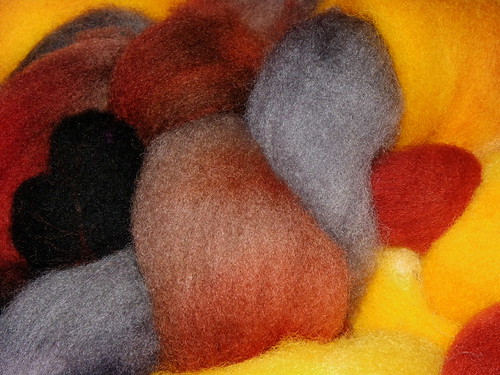 Autumn Sunset-1 left-
Autumn Sunset-1 left-

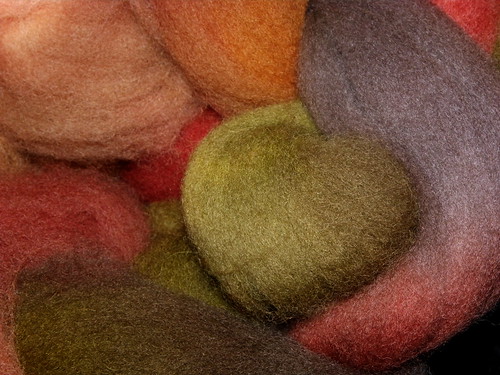 Autumn Leaves-1left-
Autumn Leaves-1left-
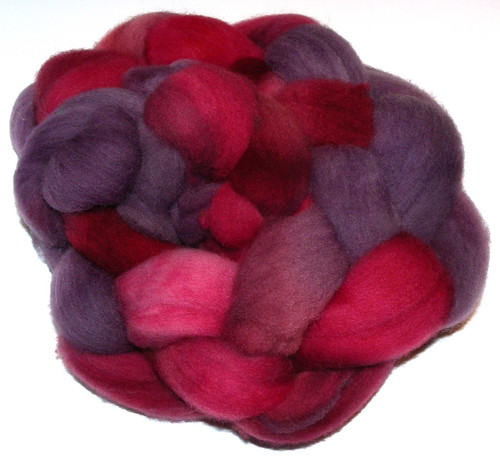
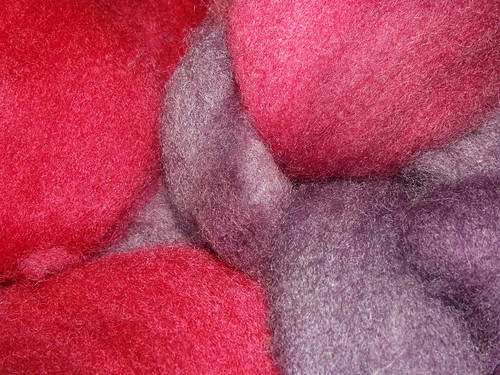 Velvet
Velvet
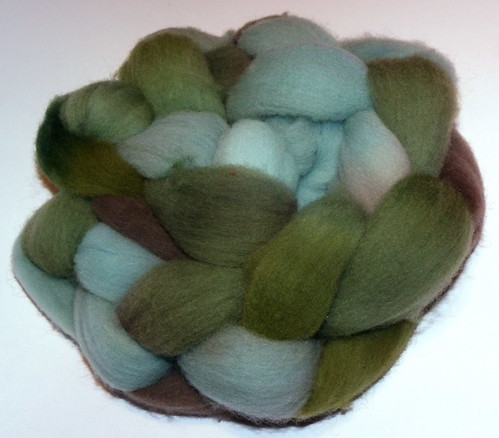
 Swamp Forest-sold-
Swamp Forest-sold-
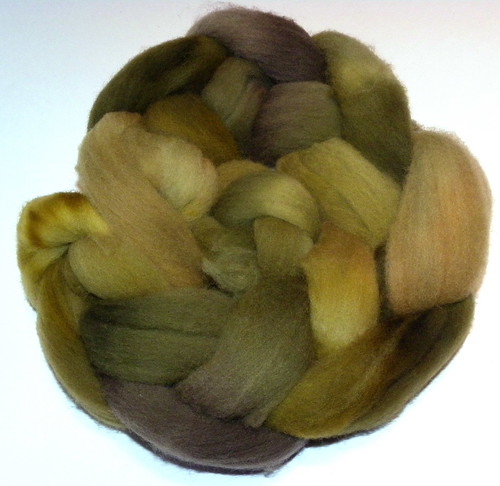
 Moss Magic
Moss Magic
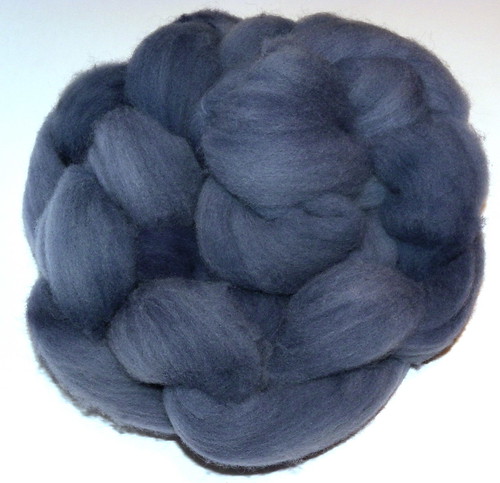
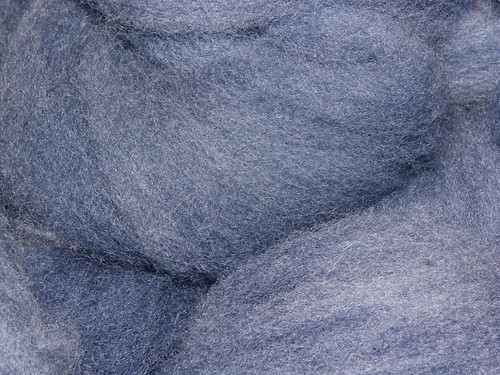 Indigo
Indigo

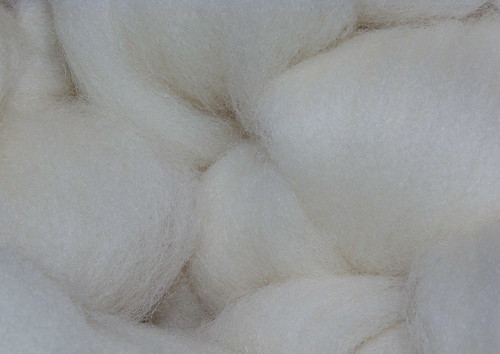 Natural
Natural

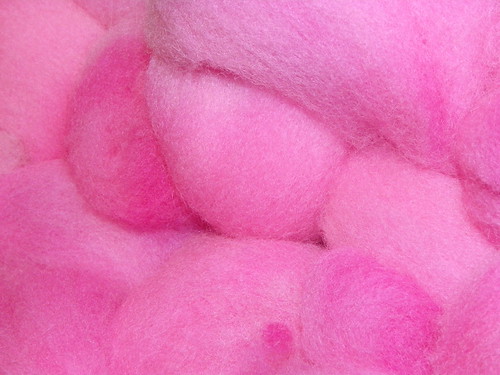 Cotton Candy
Cotton Candy
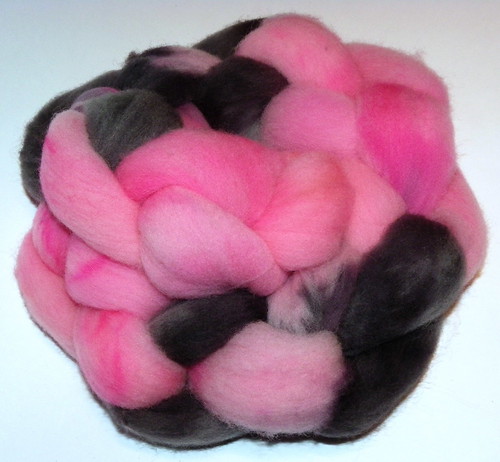
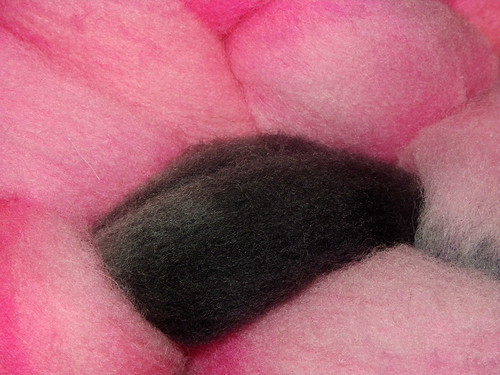 It’s so FLUFFY!!
It’s so FLUFFY!!
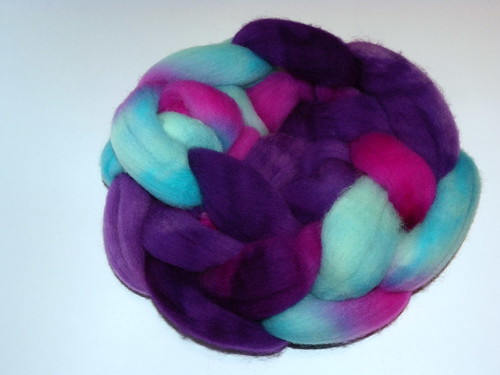
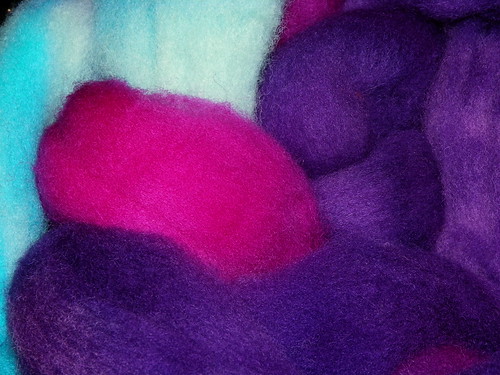 Pretty Ballerina
Pretty Ballerina
Go to http://www.sheepshow.com to see what is happening and book your tickets. The Bendigo Sheep and Wool show is the biggest wool show in Australia ! with an amazing amount of woolcraft, indie dyers, a huge amount of tops, yarn, craft, felt and spindles, spinning wheels and anything you need for your knitting,crocheting and crafting.
I will be there with an amazing amount of new exclusive wool blends and yarns, batts, felt and landscape and botanical natural dyes and so much more !!!
I will also have spindles by the amazing Bearded Dragon and lots of fibre tools as well from darning mushrooms to noste pinne and needle cases to distaffs. And, there will also be some wonderful Turkish spindles from my friend Scott Snyder available again !
Get ready for a fabulous weekend filled with lots of craft and fun !!!
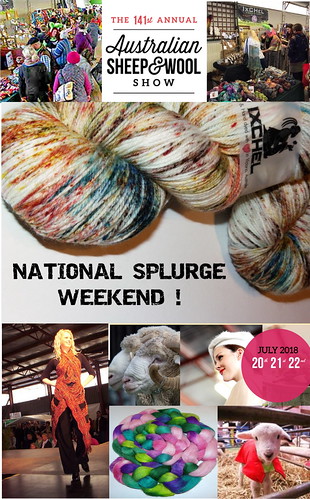

Ofcourse the settlers brought a whole different set of “dresscodes” and way of surviving with them, so, sheep were part of the survival plan.
The settlers that came to the barrier island off the coast of Virginia, Hog Island, brought a British sheep breed with them. I have not been able to find which particular breed or breeds they could have been, but judging by the way the fibre behaves I think it may have been Hampshire Downs or Shropshire or Southdown. Anyway, I digress, I was still in the 1700s… It was in 1672 that a group of 22 colonists and their families went to live on Machipongo (Hog) Island, just a few miles above the entrance to Chesapeake Bay. What became of them is an impenetrable mystery. They disappeared so completely that no descendants are known. Despite their fate, it remained the consensus that living on the island was good. The sea, the inlets and the marshes teemed with fish and fowl. As for flesh, the natural pastures were ideal for livestock, particularly hogs (hence the name Hog Island). There must have been an impressive number of these at one time to cause the romantic-sounding name Machipongo to be dropped in their favour. It wasn’t til the Civil War times that a second colonization began. The sheep ascendants from back in 1672 were still there and were thriving.
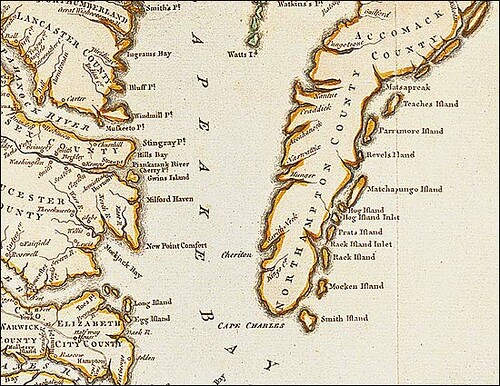 |
| You can see Hog Island still named "Matchapungo island" on this old map here.. 4th barrier island from the top right of the picture |
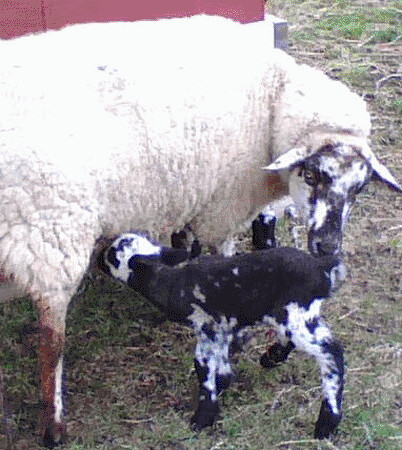 |
| A hog Island sheep with her lamb: The Hog Island Ewes are excellent mothers |
The people lived truly on the fat of the land. Oysters, clams, crabs and fish or a superiority unchallenged in the rest of the United States were staples. Vegetable gardens yielded two crops a year. Aside from a few necessities like clothing and shelter, nothing required cash.
The hardy, self-reliant folk laughed at insurance agents. Their total taxes were a few cents a year paid on their real estate to the Northampton county treasurer. They did not even have to license their automobiles. They made their own roads. They enjoyed such health that a doctor would have starved. Though many of them were laid low by the flu epidemic of 1918, no one died.
Every man kept his money in his home, and in some cases this meant considerable cash. But no one ever reported it missing. There was one store operated by Sam Kelly. Like everything else on Hog Island, this store was different from what you would expect: No one ever was permitted in it. Every morning Mr. Kelly made the rounds taking orders. Every afternoon, after loading up in his forbidden precincts, he delivered. He kept this up until he was over 80. No one ever knew him to buy anything except to sell it. He was the secret topic of conversation: how much money did he have and where was it hidden? After he died in lonely squalor, his quarters were searched. Thousands of dollars were hidden away in nooks and crannies. But it was calculated that the amount should have been much greater. It was decided that he had buried most of it. It was never found….
Slowly but surely the island was being swallowed by the sea. In the 1930s the sea started to move in…so the people moved out.
Whole houses were detached from their moorings and brought to the mainland. The whole community left but some of their heritage 1672 sheep remained. In 1933 a string of hurricanes and “nor’easter” storms washed across the island and discouraged the residents from continuing life in their island community. By 1945 all of the residents of Hog Island had migrated to the Eastern Shore of Virginia and had taken most of their livestock with them. Many sheep remained on Hog Island and continued to thrive as they had for centuries. The annual shearing and notching in the spring was generally the only contact between the owners and their sheep. The sheep roamed freely upon their “floating” pasture foraging for marsh grass and drinking fresh water from small pools that had been dug ankle deep into the sandy soil.
 |
| (photo courtesy of the Baltimore Sun, 1957) |
The last sheep were removed from Hog Island in 1974 when the Nature Conservancy purchased the island. But, surprise!!! : Four years later, Virginia Coast Reserve agents found, to their surprise, a thriving flock of sheep on the island. This is a testament to the extreme hardiness of these animals.
The Nature Conservancy removed the last of the sheep in late August 1978, to return them to full domestication. Ten rams and twenty ewes travelled to Virginia Tech for research into the breed’s parasite resistance.
The year-long study indicated that isolation, not resistance, had kept the sheep virtually parasite free on the island.
Following their stay at the University, the remnant flock found a new home at George Washington’s Birthplace National Monument. While private breeders hold some flocks, many Hog Island sheep remain part of the heritage landscapes of living history museums, including Plymouth Plantation, the Museum of American Frontier Culture, Mount Vernon Estate and Gardens, George Mason’s Gunston Hall, George Washington’s Birthplace, and the National Colonial Farm in Williamsburg. The Hog Island sheep look right at home at the Colonial Farm in Williamsburg considering they descend from and resemble historic sheep that existed in the New World during and after the colonial period.
The Hog island sheep sure can stand the very harsh conditions because of their extremely high lanolin content in their fleece.
It is the most water repellent fibre I have ever worked with even with almost all the lanolin removed it has this strange quality of soaking the water up and then spitting it out again almost immediately, which means getting dry after a heavy storm would have been a lot easier than being soaked to the bone for those sheep. I found their fibre extremely nice to work with: it traps the air beautifully, it is slightly crisp but not so much as that of the North Ronaldsay.
The Locks are dense and downy and the staple length is medium to short, like that of a down sheep like Southdown and Hampshire down sheep. Professional mill processing of Hog Island sheep is hardly ever done because it can result in a lot of nepps.
I found spinning the fibres, that the singles “ask” to be spun reasonably fine. It sets the short fibres in the twist. That said, I think an art yarn which asks for core spun fluffiness can also be amazing !
The micron count as with all critical or endangered breeds vary a lot. This lot was around the 22 micron. I think it is perfectly suitable to make socks, shawls , scarves out of. Just like the Hog Island sheep it can withstand quite a lot. It also depends what you “tolerate” close to skin. Everybody is different.
The fibre is not lustrous and I was told that because it has such a matte appearance that when you dye it, you can get a very muted colour. I tried. I dyed with Indigo, Madder, onion skins, mushrooms and walnut amongst others but also some Landscape dyes (the colourway Party Time for example). Reds are harder but with a bit of perseverance I found doing a very slow immersion or steaming and then letting it cool down overnight can result in quite saturated colours.
Most of the Hog Island sheep are white. Only 10% are black. The lambs have cute black spots on their body and their fleece but the sport disappear when they get older. The face and legs of these sheep can be speckled brown, white, and black, or have black faces and legs.
Wool from this breed is of medium weight with fleece yields ranging from one to 4 kilos. The sheep will naturally shed their wool slowly each year, but most owners choose to shear them in order to collect wool and create a more even looking coat on their sheep. The ewes make excellent mothers and most often give birth to twins. Hog Island sheep are fabulous foragers and prefer to browse rather than graze. They stay in very tight flocks and are extremely alert in nature.
More information can be found here
http://svffoundation.org/animals/hog-island-sheep.html
http://www.hogislandsheep.org/ http://www.livestockconservancy.org/index.php/heritage/internal/hog-island
and if you want to see some Hog island lambs in action here is the link to a cute youtube video :
Better get this show on the road! Have a fun snaffle !!!
Warning : There is only a very limited quantity available.
Please don't hesitate to contact me at any time if you have any questions okay? Always happy to enable. All my contact details are to be found at the end of this week’s blog entry. Have fun !!!
Hog Island Sheep Tops
100+ gram tops, hand dyed AU$23

 Autumn Sunset-1 left-
Autumn Sunset-1 left-
 Autumn Leaves-1left-
Autumn Leaves-1left-
 Velvet
Velvet
 Swamp Forest-sold-
Swamp Forest-sold-
 Moss Magic
Moss Magic
 Indigo
Indigo
 Natural
Natural
 Cotton Candy
Cotton Candy
 It’s so FLUFFY!!
It’s so FLUFFY!!
 Pretty Ballerina
Pretty BallerinaThe New IxCHeL Club sign ups are OPEN until June 30th or until spaces are filled !!!
Get a monthly fibre and yarn surprise !
Always great blends and new colourways inspired by the Art Journey Theme !
July, August and September 2018
For all our international club fans there is a possibility to ship all three clubs together to save on postage if you want :-) Just pm me and enquire about the options available.
IxCHeL Fibre Club July , August and Septembere 2018
The subscription is for a period of three months and you will receive one special hand dyed top/roving per month to the value of AU$24 or more
All the tops will be hand dyed and will be especially made for the members of IxCHeL Fibre Club !
Price to join the IxCHeL Fibre Club #36 and receive your special hand dyed top :)) for three months (July, August and September 2018) is AU$72 + postage (parcel post or airmail). AND there are good value double serves available !!!
For Australia : single serve $72+$29 postage (parcel post), double serve $136+$29 (save $8) or triple serves $204 (save $12!) + postage
For USA + Canada: single serve AU$72+AU$57 (Airmail) double serve AU$136+AU$57
For UK,Europe, rest of the world: Single serve AU$72+AU$69 (airmail) Double serve AU$136+AU$69
For Asia: Single serve AU$72+AU$50 (airmail) Double serve AU$136+AU$50
If you want to receive a fibre surprise every month then join the IXCHEL FIBRE CLUB #36 now. Numbers are strictly limited ! The July 2018 Club is going to be shipped out end of July, the August club mid August and the September club mid September. Payment via direct deposit or credit card or paypal. Just PM or email me your details.
Numbers are strictly limited !
The IxCHeL Sock Yarn Clubs July, August and September 2018
Every month for three months (July, August and September 2018) you will receive: enough hand dyed luscious yummy yarn to make a pair of socks or a lush shawl or scarf ofcourse! (the hand dyed yarn will be exclusive for the Ixchelbunny SOCK-IT-TO-ME Yarn CLUB and will range from a sockweight yarn (a 4ply/fingering weight yarn) or an 8ply / DK weight enough to make a pair of socks ; Every month a sock pattern, tips and instructions ! Now is that GOOD or is that GOOD ??!
I will even offer a double serve for those of you who like their socks extra long !
For Australia : single serve $87+$29 postage (parcel post) double serve $146(= one skein FREE!!!) +$29
For USA + Canada: single serve AU$87+AU$57 (Airmail) double serve $146 (= one skein FREE!!!) +AU$57
For UK,Europe, rest of the world: Single serve AU$87+AU$69 (airmail) Double serve $145 (= one skein FREE!!!) +AU$69
For Asia: Single serve AU$87+AU$50 (airmail) Double serve $145 (= one skein FREE!!!) +AU$50
Payment via direct deposit or credit card or paypal . Just PM or email me your details
By the way: you don’t HAVE to knit socks if you don’t want to.. the hand dyed yarn is amazingly nice for scarves, cowls, beanies and even tops ! Anything goes . The July 2018 Club is going to be shipped out end of July, the August club mid August and the September club Mid September.
IxCHeL Funky Bunny Batt Clubs July, August and September 2018
Here are all the details and just pm me when you have any questions or want to be part of the funky bunny batt club Movement ;-) Welcome to the blingy dark side ;-D
The subscription is for a period of three months and you will receive one special hand dyed funky bunny batt per month to the value of AU$40 or more .
The batts will range in weight from 140grams to 180grams with luxury fibres like camel , angora, cashmere, silk, yak, llama even wallaby and bison and rare sheep breeds !!!! All the batts will be hand dyed and will be especially made for the members of IxCHeL funky bunny Club ! Every month you will receive a HUGE luxury funky bunny batt !
Sign up now and you will receive an Ixchel Hand dyed , super luxurious funky bunny batt for July, August and September 2018.
Price to join the IxCHeL Funky bunny for three months is :
For Australia : $114+$29 postage (parcel post)
For USA + Canada: AU$114+AU$57 (Airmail)
For UK,Europe, rest of the world: AU$114+AU$69 (airmail)
For Asia: AU$114+AU$50 (airmail)
If you want to receive a fibre surprise every month then join the IXCHEL FUNKY BUNNY BATT CLUB now.
Numbers are strictly limited ! The July 2018 club is going to be shipped out end of July, the August club mid August and the September club mid September 2018. Payment via direct deposit or credit card or paypal. Just PM or email me
Numbers are strictly limited ! The July 2018 club is going to be shipped out end of July, the August club mid August and the September club mid September 2018. Payment via direct deposit or credit card or paypal. Just PM or email me
Please don't hesitate to contact me at any time if you have any questions okay? Always happy to enable. All my contact details are to be found at the end of this week’s blog entry.
Have a fun weekend !!!
Have a fun weekend !!!
Please don't hesitate to contact me at any time if you have any questions okay? Always happy to enable. All my contact details are also to be found at the end of this week’s blog entry.
Have a creative week!
Please don't hesitate to contact me at any time if you have any questions okay? : Always happy to enable.
All my contact details are here:
Have a Creative and Fun week!
All my contact details are here:
How To Order:
1. You can email me on ixchel at rabbit dot com dot au or ixchelbunny at yahoo dot com dot au
2. Message me on facebook or
3. Message me on www.ravelry.com where I am ixchelbunny.
4. message me on Instagram where I am @ixchelbunny
I will email you right back with all your order details and payment methods.
Any questions? Any custom orders for yarn or dyeing fibre? : Please don’t hesitate to ask! Always happy to enable.
2. Message me on facebook or
3. Message me on www.ravelry.com where I am ixchelbunny.
4. message me on Instagram where I am @ixchelbunny
I will email you right back with all your order details and payment methods.
Any questions? Any custom orders for yarn or dyeing fibre? : Please don’t hesitate to ask! Always happy to enable.
Dates to put in your Calendar
Friday July 20th to Sunday July 22nd
Australian Sheep and Wool Show, Bendigo.Go to http://www.sheepshow.com to see what is happening and book your tickets. The Bendigo Sheep and Wool show is the biggest wool show in Australia ! with an amazing amount of woolcraft, indie dyers, a huge amount of tops, yarn, craft, felt and spindles, spinning wheels and anything you need for your knitting,crocheting and crafting.
I will be there with an amazing amount of new exclusive wool blends and yarns, batts, felt and landscape and botanical natural dyes and so much more !!!
I will also have spindles by the amazing Bearded Dragon and lots of fibre tools as well from darning mushrooms to noste pinne and needle cases to distaffs. And, there will also be some wonderful Turkish spindles from my friend Scott Snyder available again !
Get ready for a fabulous weekend filled with lots of craft and fun !!!

RABBIT ON !
((hugs))
Charly





No comments:
Post a Comment